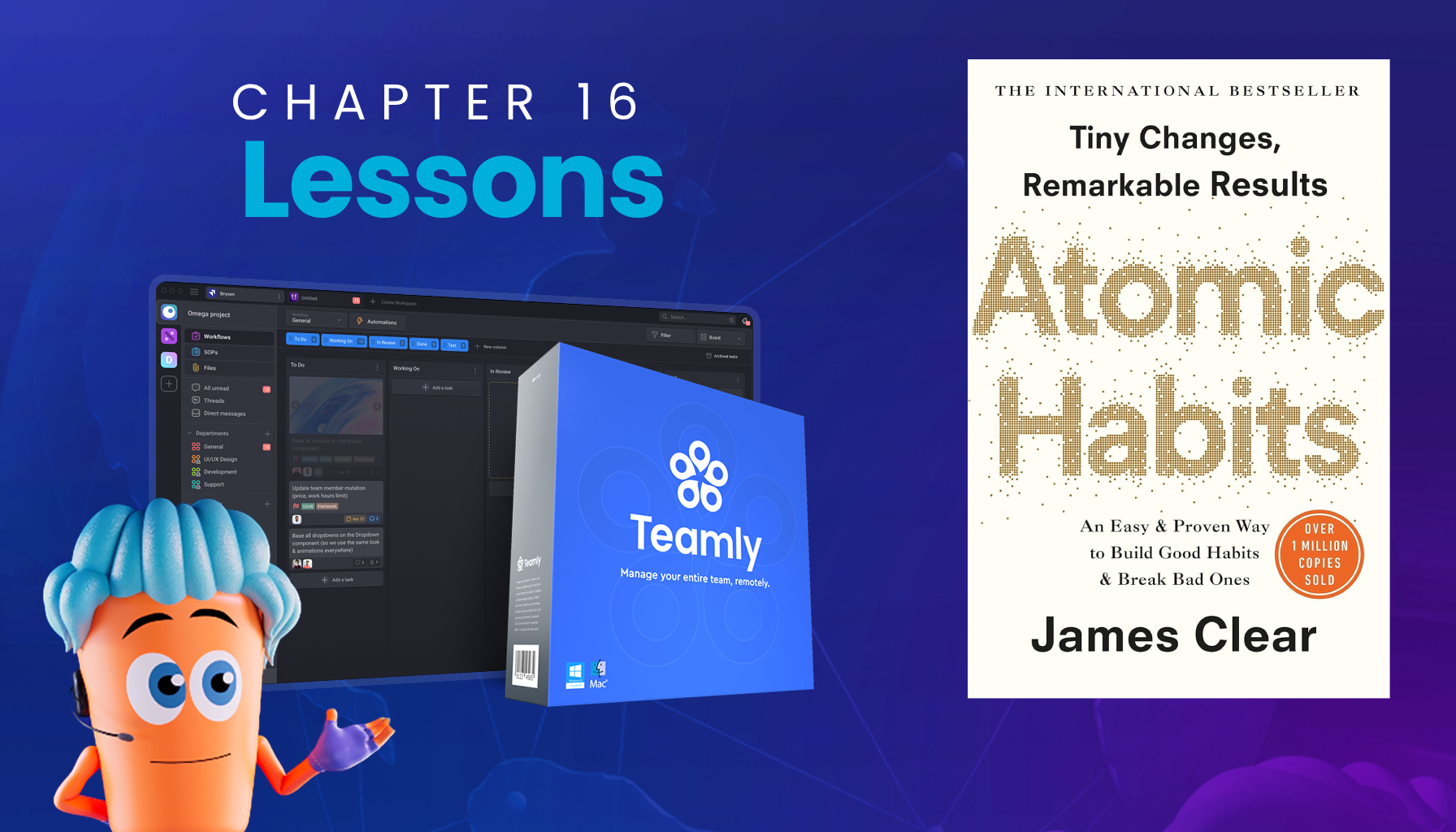
Click the button to start reading
Key Takeaways from “Atomic Habits” by James Clear – Chapter 16
Chapter 16 of James Clear’s book, Atomic Habits, provides a highly actionable strategy for habit formation.
The chapter begins with the story of Trent Dyrsmid, a young stockbroker who revolutionized his career with what Clear calls the “Paper Clip Strategy.”
By moving a paper clip from one jar to another for every sales call he made, Dyrsmid created a visual cue that kept him motivated and consistent.
This simple, yet powerful method highlights the effectiveness of visual measurements in habit building.
Visual cues offer a tangible sense of progress, which is a key element in reinforcing behaviors. For example, one reader of the book shared how she moved a hairpin from one container to another for every page of her book she wrote.
Another man moved a marble after completing each set of push-ups. These methods are effective because they leverage immediate visual feedback to reinforce behavior, making the habit process more enjoyable and rewarding.
By creating a visible indicator of progress, individuals like Dyrsmid were able to build momentum.
This strategy isn’t just limited to work tasks or fitness routines. Visual measurement can be integrated into any habit you want to reinforce—whether it’s tracking the number of times you read each day or measuring the quality of your relationships.
The idea is to make progress clear and evident, which in turn triggers a sense of accomplishment and forward motion.

Why Habit Tracking Matters
Habit tracking, as emphasized in Atomic Habits, is not just a productivity hack; it’s a powerful reinforcement mechanism.
When progress is visible, it becomes tangible. Jerry Seinfeld famously used the strategy of “don’t break the chain” by marking an ‘X’ on a calendar each day he wrote a joke.
This consistency, combined with clear visual evidence of his efforts, helped Seinfeld build an unbreakable streak. Habit tracking serves not only as a motivator but also as an accountability tool that keeps you in line with your goals.
Clear highlights that tracking habits keeps you honest about your efforts. Most of us believe we are putting in more work than we actually do, and without tracking, we often overlook our blind spots.
By tracking, you gain an objective look at your actual consistency and dedication. Whether it’s marking off days on a calendar, filling in boxes in a journal, or using more sophisticated software tools, the act of recording your efforts reinforces your commitment.

The Three Benefits of Habit Tracking
James Clear outlines three critical benefits of habit tracking, which contribute to creating lasting habits.
1. Obviousness
Habit tracking creates an immediate visual cue. When it’s clear whether a habit has been completed or not, people are more inclined to follow through. Consistent progress in tracking builds a sense of satisfaction and reinforces the habit.
For instance, if you are trying to build a daily meditation habit, marking an ‘X’ on your calendar each day creates a visual cue that signals success.
2. Attractiveness
Motivation grows with progress. Clear explains that seeing visual evidence of progress can turn habit tracking into a game-like experience, making the process attractive and engaging. Each small win fuels the desire to continue.
This is because human psychology craves visible progress. Small markers of achievement, such as checkmarks or crossed-out items, serve as tiny rewards, driving our desire to keep moving forward.
3. Satisfaction
The most important benefit of habit tracking is the satisfaction of progress. Whether it’s crossing off a calendar date, completing an entry in a journal, or adding a bead to a string, each step forward provides a gratifying sense of accomplishment.
This immediate reward encourages continued action, which eventually compounds into significant results. Clear explains that the key is to stay focused on the process, not the outcome, and tracking helps solidify that mindset.

Avoiding the Pitfalls of All-or-Nothing Thinking
Clear warns against all-or-nothing thinking, which can derail habits when people feel they must perform perfectly. Even on sluggish days, showing up matters more than aiming for perfection. A “bad” workout or a single productive task still prevents compounding losses. The goal is to avoid putting up a zero. If you miss once, don’t miss twice. This is a powerful way to break the cycle of inconsistency and prevent small failures from snowballing into complete collapses.
It’s also essential to track the right things. Using the example of a restaurant tracking daily revenue alone, Clear explains that such metrics may miss crucial details like customer satisfaction or return rates.
This connects to the principle of Goodhart’s Law: “When a measure becomes a target, it ceases to be a good measure.” In the workplace, focusing on output metrics without accounting for the underlying factors can lead to misguided efforts. It’s a reminder to stay aligned with the bigger picture rather than obsessing over specific numbers.
The Bigger Picture: Keep Habit Tracking in Its Proper Place
Measurement can guide, but not dominate. Clear reminds readers not to lose sight of intangible factors that cannot be easily quantified.
In a world driven by numbers, it’s tempting to believe that if something can’t be measured, it doesn’t matter. But habit tracking should not become an all-consuming task. The best results come from focusing on “nonscale victories” like improved mood, energy levels, or more engaging conversations with loved ones.
Businesses often face similar dilemmas, focusing on numbers that don’t tell the whole story. This is where a tool like Teamly can help organizations track meaningful progress and optimize team performance, without getting lost in data overload. By maintaining the right balance of tracking, organizations can achieve better outcomes without sacrificing quality or culture.

Chapter Summary
- One of the most satisfying feelings is the sense of making progress.
- A habit tracker is a simple way to measure whether you did a habit—like marking an ‘X’ on a calendar.
- Habit trackers and other visual forms of measurement can make your habits satisfying by providing clear evidence of your progress.
- Don’t break the chain; strive to keep your habit streak alive.
- Never miss twice. If you miss one day, quickly get back on track.
- Just because something is measurable doesn’t mean it’s the most important thing.
Ready to dive into Atomic Habits? Get your copy on Amazon today.
















